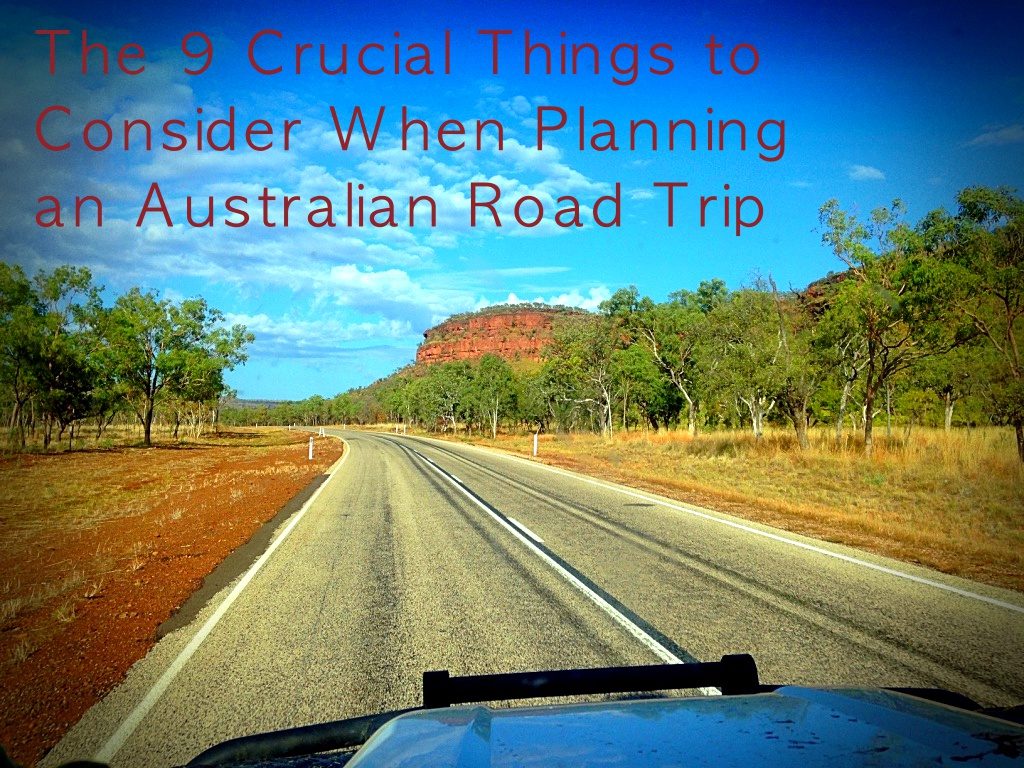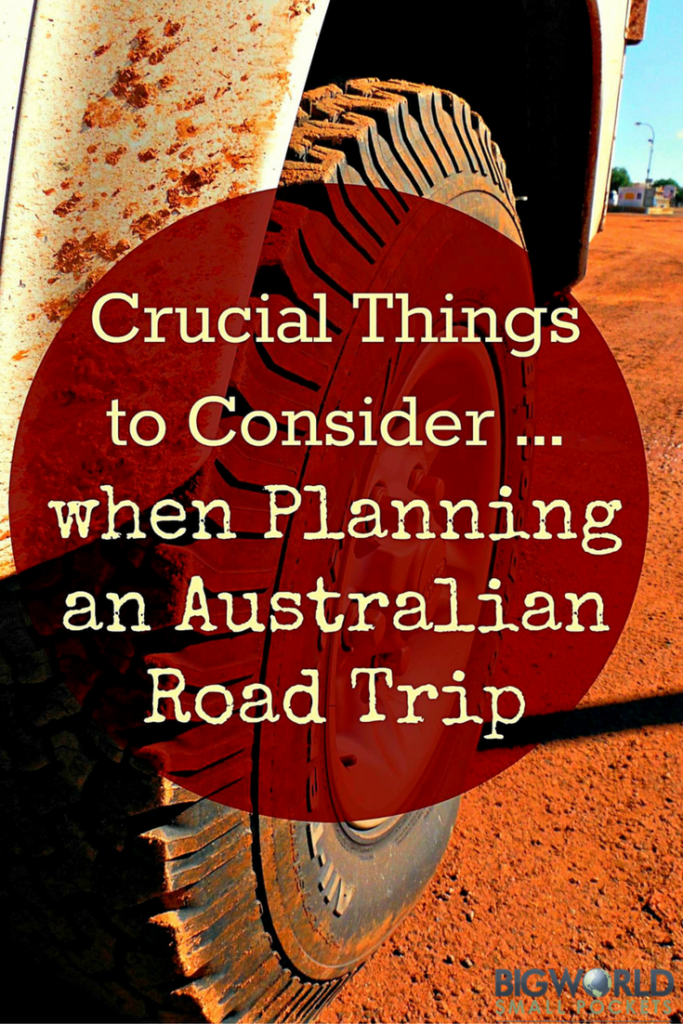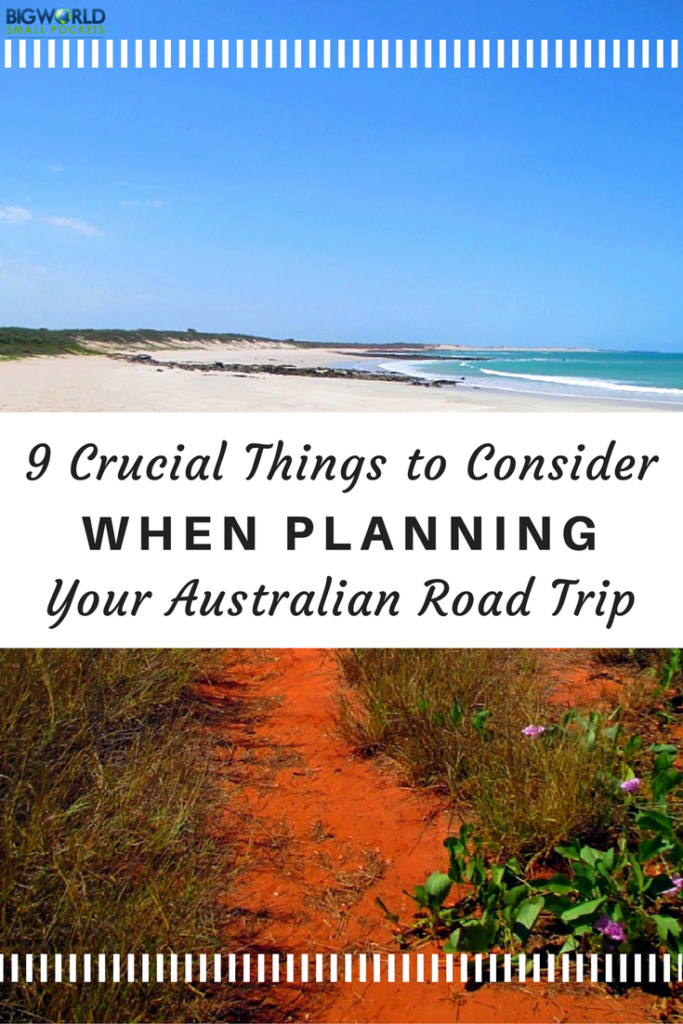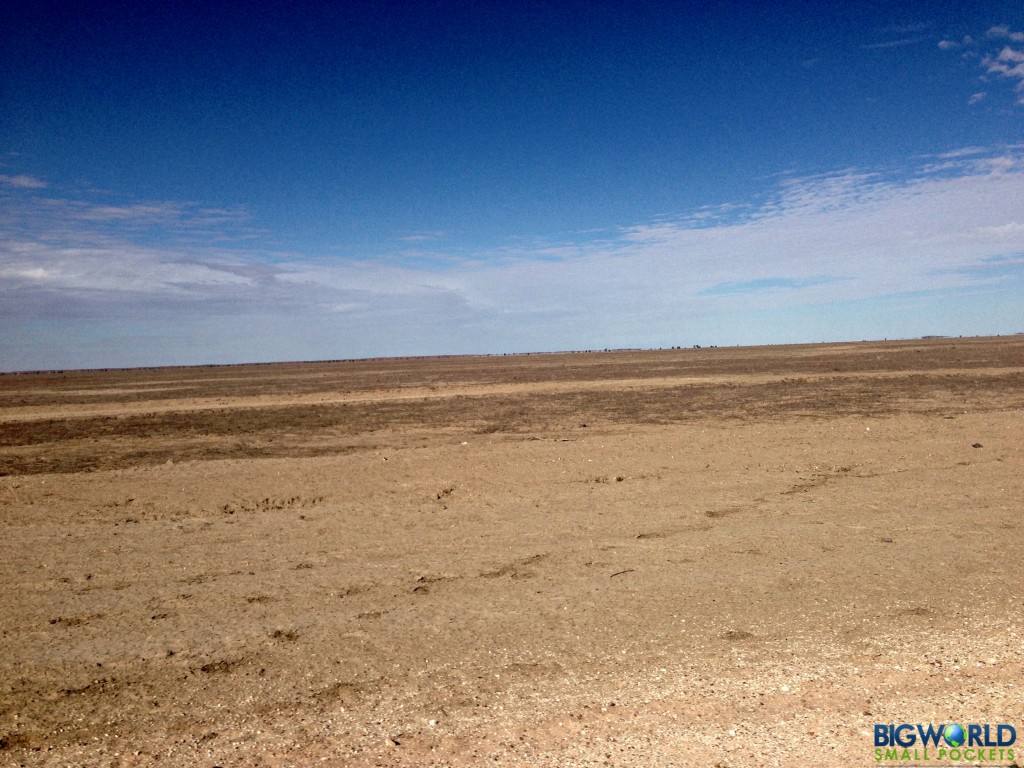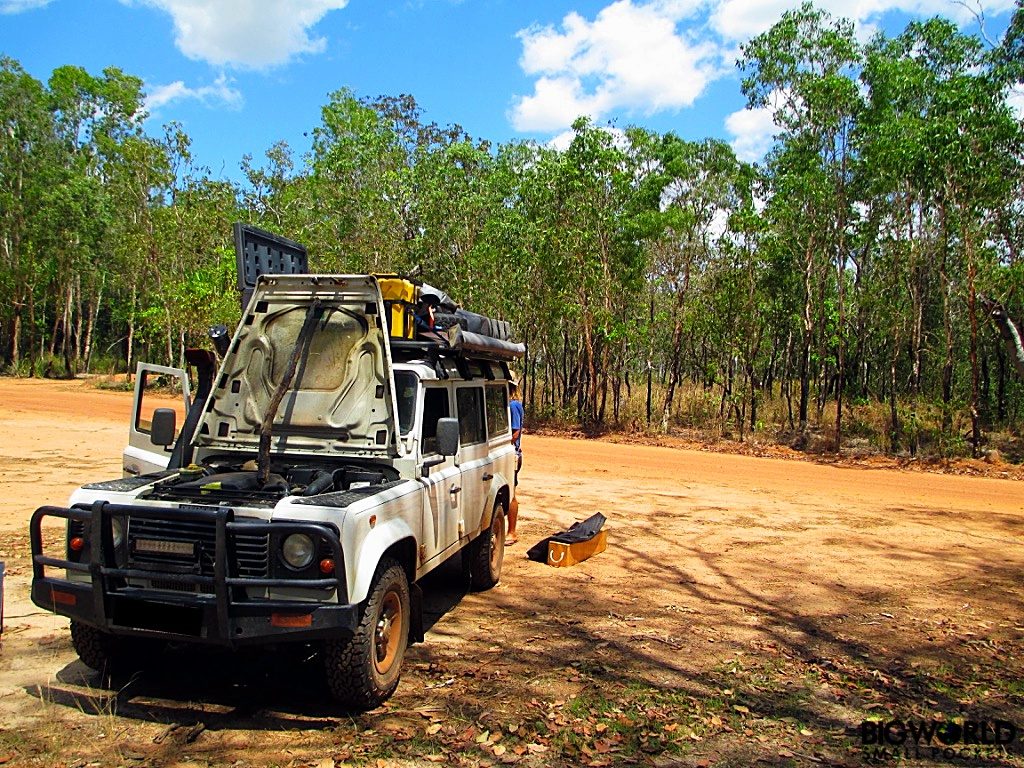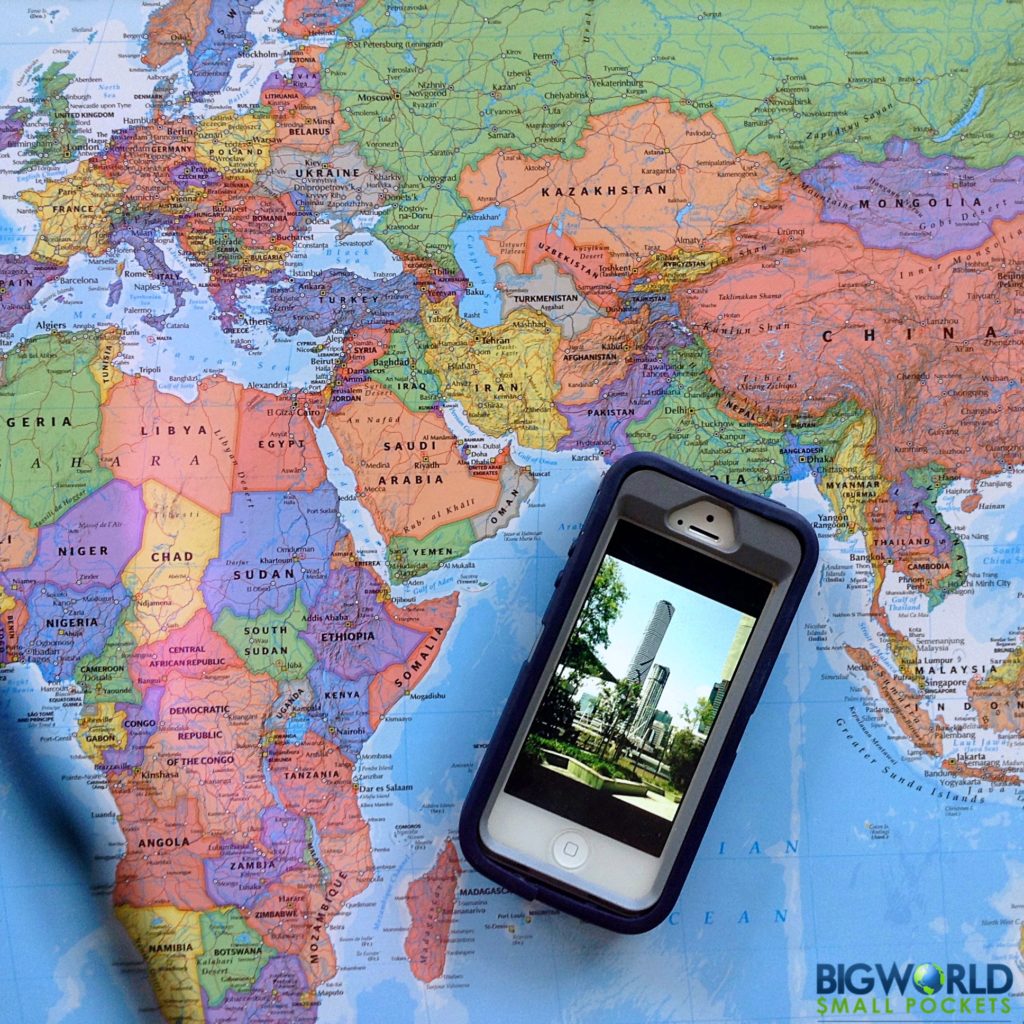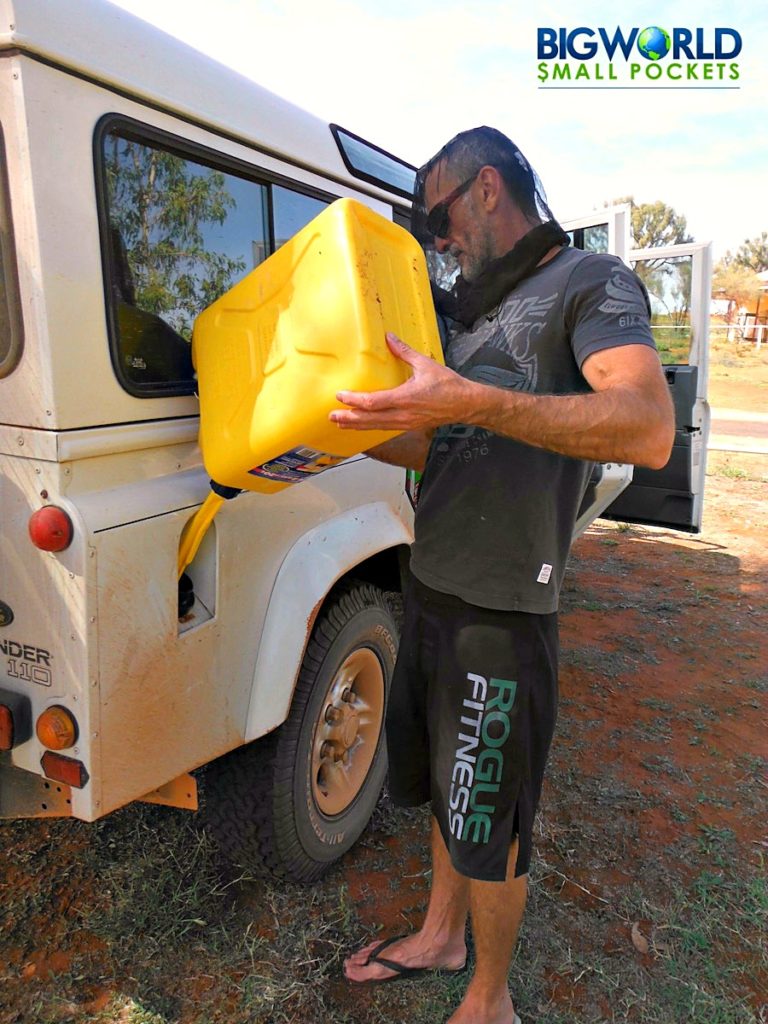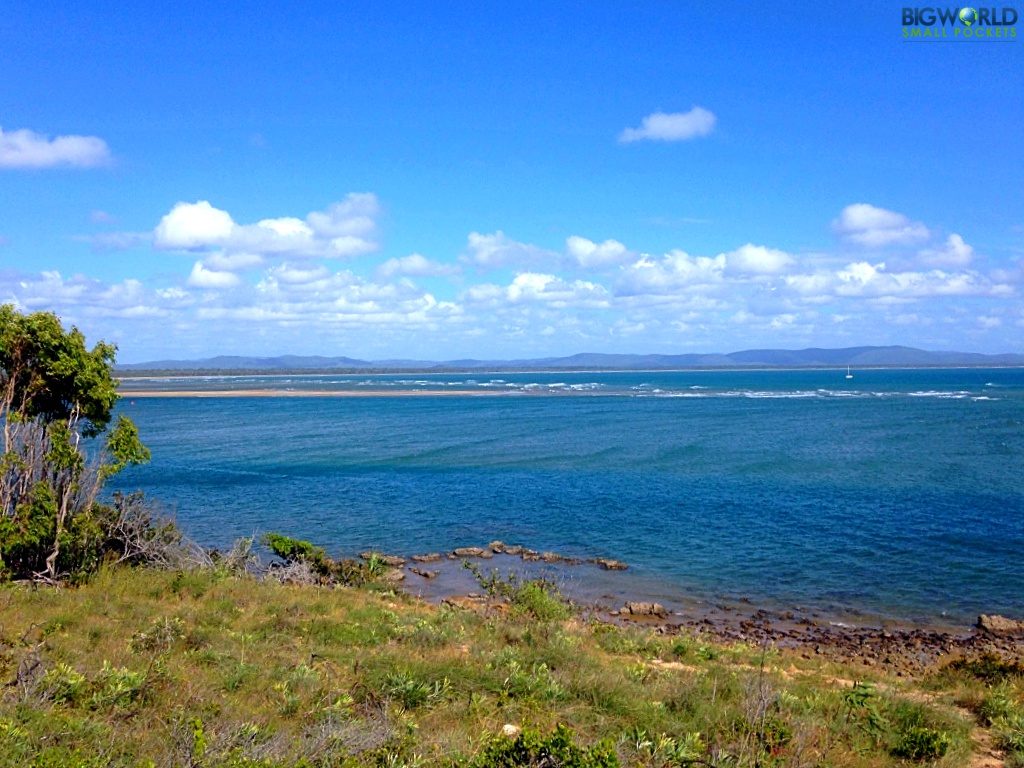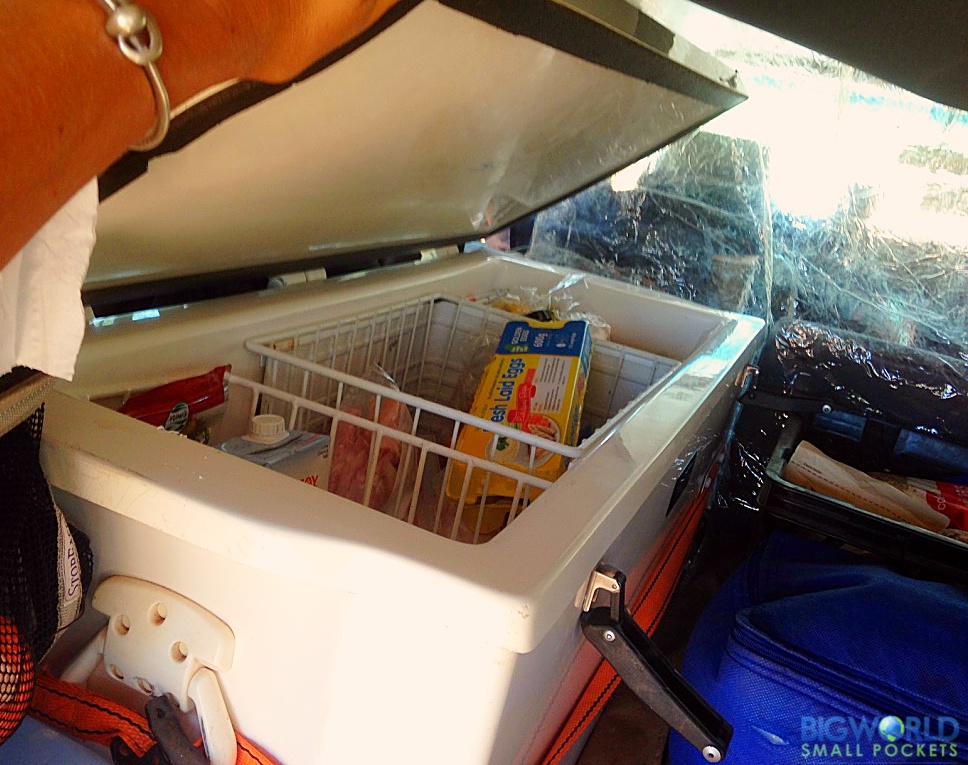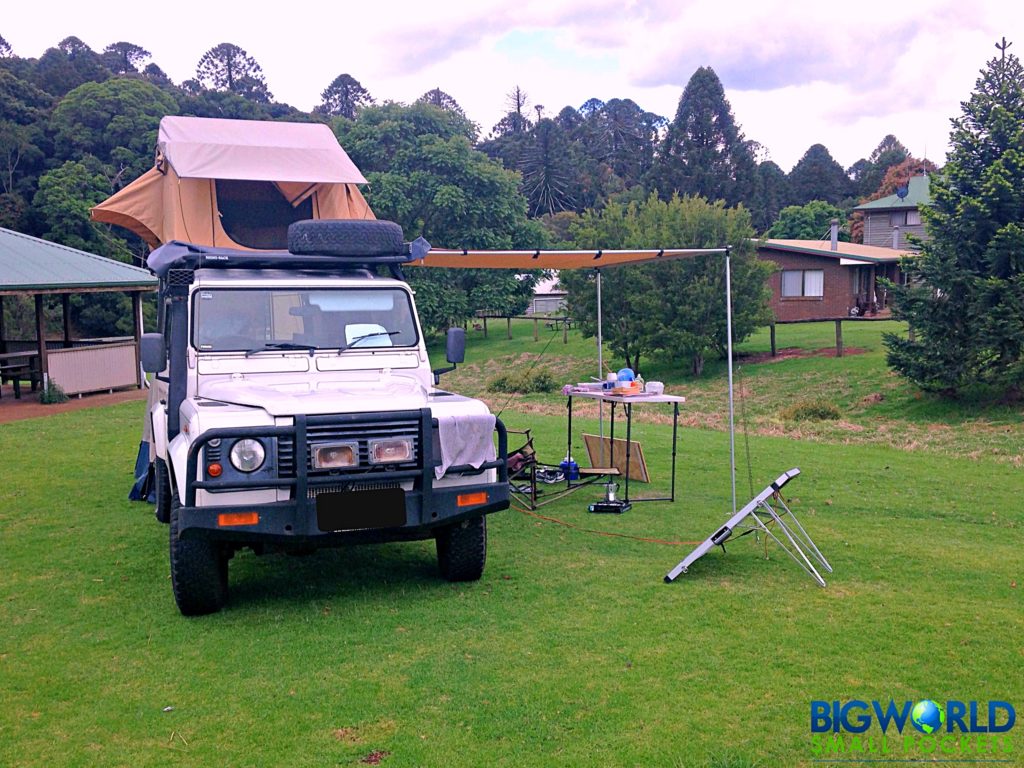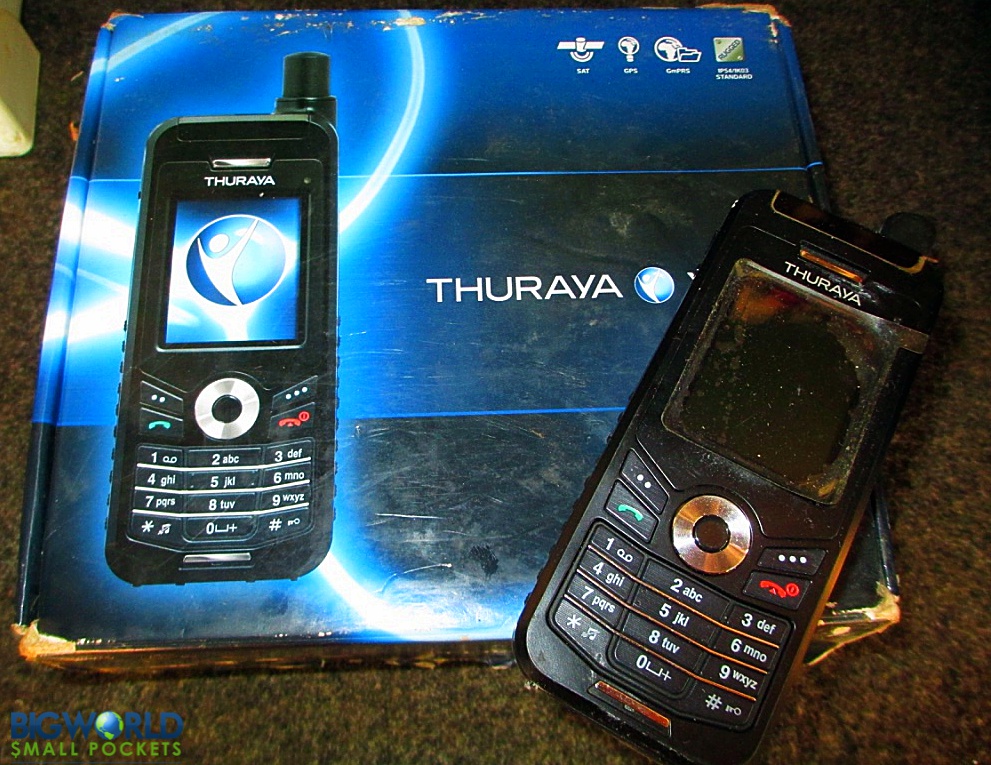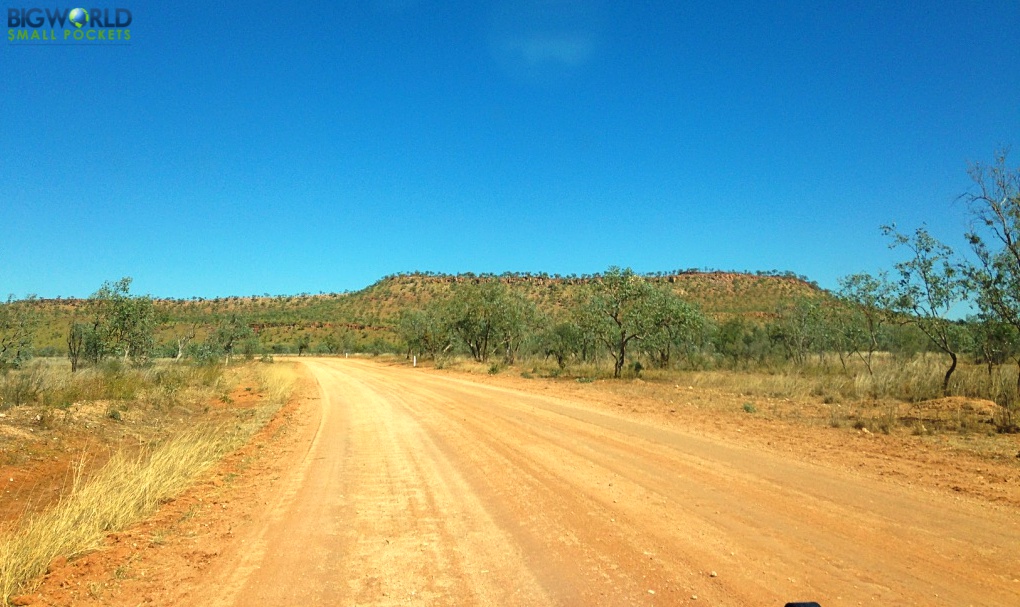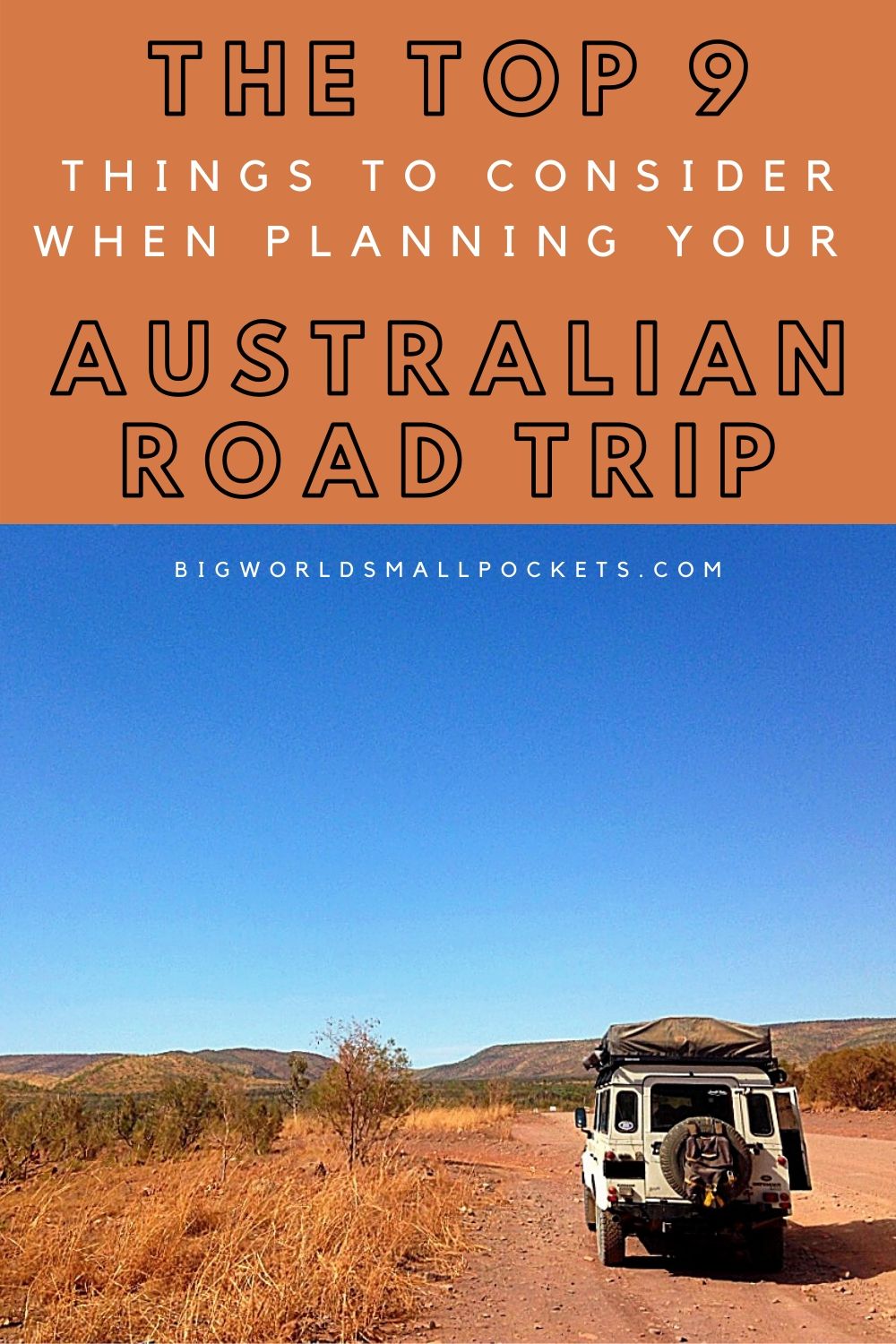Along with seeing Uluru and exploring Sydney Harbour, taking an Australian road trip is one of the bucket list essentials when visiting this country.
And that’s probably because as vast, diverse, wild and beautiful as it is, the Australian landscape lends itself to a driving adventure.
So I’m very glad to confirm that I’m lucky enough to have had my fair share of road trips here – including journeying up through Central Australia from Adelaide to Darwin as well as a mammoth road trip across the top of the country from Sydney to Perth!
This last trip took over 6 months and so, I think it’s fair to say I’ve got a good idea when it comes to knowing the crucial things to consider when planning an Australian road trip, especially if it’s a long one!
And I’ve decided to share them all with you here, so you can get ready for the trip of a lifetime too.
So read on to learn my top 9 elements when it comes to gearing up for your big Aussie drive!
Related Posts
- Cairns to Darwin – Your 14 Day Road Trip Itinerary
- Perth to Broome Road Trip on a Budget!
- The Ultimate Darwin to Broome Road Trip Itinerary
This page contains affiliate links meaning Big World Small Pockets may receive a small commission on any purchases at no extra cost to you.
#1 Season & Climate
One of the most crucial things to consider when planning an Australian road trip is when you are going and where!
Stretching across different climate zones (temperate, subtropical and tropical), seasons can vary wildly in this massive island and are something you definitely want to take into account.
Weather
High season in the tropics of North Queensland, Western Australia and the Northern Territory runs during the winter months of May – September.
This really is the best time to visit these places, especially on a road trip, because torrential rains and hellish humidity can make travelling there during the summer months a misery.
The summer months of November – March are better for road tripping in the south of the country i.e. Victoria and South Australia certainly.
Do be aware however that scorching temperatures during this time can be a problem, as well as bushfires.
Top Tip: Keep abreast of any problems by following reputable weather and government websites such as the Bureau of Meteorology.
School Holidays
When considering the time of year in which you’ll be on the road, you may also want to take into account when Australian school holidays fall, especially the large Christmas break that runs December – January.
At this time there will be significantly increased traffic on the roads and many campsites will be a lot busier or even full.
You may need to book things well in advance at these times and prices might be higher.
Just enter your details below and I'll email it you - simple!
Information will be sent to the email provided above
#2 Vehicle Health
You will need to make sure your vehicle is in a fit state to make your intended road trip well before you set off.
This is key, so do make sure you allow time for any necessary repairs etc that have to be done beforehand.
Obviously, there are simple things that you can check yourself such as tyre pressure, oil, water, brake fluid and power steering fluid.
However, there are some things that can only be tested by a professional mechanic.
Servicing
Book your car in for a service around 6 weeks before any long trip and tell the mechanic of your plans.
It may seem like a hefty outlay, but believe me, it will cost you a lot more to get something fixed on your vehicle in a remote part of Australia, especially if you breakdown!
And yes, I speak from personal experience here!
Rego & Insurance
You’ll also want to make sure that your vehicle is properly registered in Australia before you set off on your road trip.
I strongly advise buying additional insurance cover with a registered body, such as the RACQ.
Their upgrade to include roadside assistance comes highly recommended and is one of the best tips I can give when planning an Australian road trip.
I’ve ended up using mine several times and definitely got my money’s worth!
#3 Navigation
Navigating, and the tools to do so, are one of the crucial things to consider when planning an Australian road trip.
For example, are you going to use paper maps, a GPS system or an online app for your navigation?
Computerised Maps
GPS systems are a great option, especially if going off the beaten track, for example deep into the Outback.
I love my Garmin Nuvi which helped me navigate the Simpson Desert brilliantly!
Hema offer the best-detailed maps of Australia and their online resources are very popular.
If you’re using an online map system, maps.me or Google maps to help you navigate your way around Australia, then do make sure you have a backup solution in the case of signal or reception failure, which is extremely common outside populated areas in Australia.
Paper Maps
If you’re not straying too far off the bitumen however, navigating in Australia is generally very easy as roads are straight, flat and well signed.
Throughout the country many tourist offices provide free regional maps, which are certainly worth grabbing if you get the chance.
You will also need maps for navigating your way in, out and around Australian cities, which aren’t always the easiest!
5 ESSENTIAL PACKING ITEMS FOR AUSTRALIA
#1 Good Camera – You will be pretty much snapping non-stop in Australia and will need a good camera to do this gorgeous country justice. I highly recommend the Sony A6000, which I use for all my travels and love, not least because it’s light, compact and robust!
#2 Good Walking Shoes – There will be a lot of walking in Australia – from cities to national park! Make sure your feet are comfortable therefore with a pair of New Balance Trainers. Perfect for stylish strolling, I love mine.
#3 Good Guidebook – I’m still a massive fan of the Lonely Planet Guidebooks and do think their Australia edition is well put together with lots of hints about the best spots in the country to visit.
#4 Good Water Bottle – Travelling in hot old Australia can be thirsty work, so make sure you have a metal water bottle that you can refill as you go, because tap water is drinkable here… and free!
#5 Good Sun Hat – And there’s no denying you’ll need a good sun hat for protection in Australia too. In my opinion you can’t go past this Hello Sunshine one, which is both gorgeous and ideal for keeping the rays off your face.
#4 Fuel
The more remote you are, the more fuel can cost in Australia.
In fact, on many Australian road trips, fuel might well be your biggest expense.
In Central Australia, for example, I was paying in excess of A$2.50 p/litre for diesel – ouch!
As such, fuel is one of those crucial things to consider when planning an Australian road trip, especially if you’re on a tight budget like me!
Learn more about exactly what percentage of my road trip costs are usually spent in fuel care of this budget breakdown post I wrote.
Fuel Availability
Beyond price, the other thing that makes fuel a key component to consider when planning an Australian road trip you is where you can buy it.
If you’re travelling really remote, then there might not be any fuel stations for a couple of 100km or so.
Due to both of these factors, you really want to consider your options for carrying fuel on board.
Can you get jerry cans and use them in case you can’t get to a fuel station?
Fuel Onboard
Carrying fuel onboard may also help you keep costs down.
Ideally, you’ll fill the jerry cans up with cheaper fuel and then fill up your tank using them, rather than silly-priced fuel at pumps, in more remote areas.
I recommend the Scepter 20l Jerry Cans for carrying fuel on board.
These jerry canisters are perfectly sized at 20l (5 gallons), well priced and pass all emission and spill control regulations.
#5 Water
Like fuel, water is a precious commodity when road tripping Australia and, like fuel, water can also be scarce in many parts of the country.
Thinking about how you might carry some water onboard is therefore one of the crucial things to consider when planning an Australian road trip.
Water Storage
Can you fit some water containers in your vehicle?
What size can be these be?
Remember to consider space and volume vs weight and load here.
Can you get an extra water tank fitted if you have a 4wd?
There are also many new and innovative water storage units on the market such as the Road Shower which fits onto your roof rack.
As well as storing water, the black material of the road shower also heats up the water, meaning it can also be used as a handy warm shower too!
Consider price vs. valuable space-saving when it comes to water storage on board and remember, if you are also using this onboard water to wash dishes and /or potentially shower, that you’re going to need a lot of it!
Quantity Required
I estimate you’ll probably need around 3l per person/per day if you’re watching your usage (which you should!) – although, you’ll use more in hot desert or humid tropical areas of Australia.
For my water storage, I went for the Front Runner 60 litre universal water tank because it was versatile enough to fit either on roof rack or in the back of a vehicle.
It also rectangular shaped, which means it gives you a flat surface you can store other items on top of.
Clever!
#6 Food
Thinking about how you might carry food is certainly one of the crucial things to consider when planning an Australian road trip.
Fridge
On longer trips (more than few days), I always fire up the fridge that runs off my dual battery system.
This is so great for keeping food for longer in the hot Australian weather and I wouldn’t be without mine.
Do bear in mind however, that fridges like this are expensive!
The Dometic / Waeco 61 fridge/freezer will set you back around A$1200, but comes highly recommended!
Esky
If I’m just going for a shor trip, I always opt for the cheaper method of just taking an esky (Australian word for coolbox) with me and filling it up with blocks of ice.
I swear by our Coleman Cooler, which I find a good size (especially for keeping water bottles cold) and very reliable when it comes to not leaking!
Types of Food
Taking food in jars, tins or packets that will last longer is always a good option when it comes to food prep for a road trip.
So are harder fruit and vegetables like apples or carrots that won’t bruise easily.
Nuts, seeds and muesli bars make great driving snacks!
#7 Sleeping
If you are heading off on anything more than a daytrip (which won’t get you very far in this big old island!), you’ll have to think about sleeping arrangements as one of the crucial things to consider when planning an Australian road trip.
Do you want to spend money every night paying for hotels etc and will your route allow for this?
If the answer is no to either of these questions, then there are a number of other options available.
Separate Tent
A stand-alone tent can be used in campgrounds, national parks or free camps around Australia.
It’s a cheap and easy option and one that I used on my budget 4wd road trip up through Central Australia.
I bought an Oz trail for this trip and would recommend it because to kept me dry and warm.
See my guide on buying a tent for more info.
Stand-alone tents may not, however, be a great option for long road trips as the tent may not be very sturdy for roadside camping where you’ll be competing with vans, trucks and lorries.
Stand-alone tents also take a lot of time to set up and put down, especially when you also have to dismantle all the bedding each night too.
Consider whether you’ll be moving frequently on your road trip through Australia and therefore, if a separate tent is your best option despite its appealing price tag.
Rear Conversion
Can you fit a mattress in your car or van?
This might be a cheap and easy option for shorter trips, national parks or beach drives.
I have a mattress that fits in the back of the Land Rover and this is perfect for overnight road trips or times when inclement weather makes staying in the stand-alone tent implausible, as it has on more than one occasion – I’m a hardcore camper!
With no need to set anything up, a rear conversion in your vehicle means you can simply crawl into the back when you’re done for the day, which is brilliantly quick and easy!
Space and comfort, however, might prove an issue long term, unless you have a professionally fitted campervan that is.
Rooftop Tent
These nattily designed tents fit onto your roof rack and can simply be popped up when it is time to sleep.
Normally quick and easy to assemble, rooftop tents also often come with an annexe, meaning you can cook, get dressed or read, out of the way of the rain or the viewing public!
Good for speedy set ups, the downside with rooftop tents however is that you do have to dismantle them anytime you want to drive anywhere – even just to the local shops or the start of a hike.
Perfect if you think you might be moving most days however, rooftop tents offer good value for money, especially if you have to pack up your camp regularly anyway.
I highly recommend the ARB Simpson III Brown Rooftop Tent which is the model I’ve used for many of my longer road trips.
Camper Trailer
Tow behind units that function somewhere between a tent and a caravan, camper trailers give you a lot more space and a greater number of facilities.
They often include some basic kitchen amenities such as sinks, gas bottle holders or water storage devices too.
Camper trailers normally come with large awnings or annexes too, which can provide good shelter from rain or wind, meaning you can cook and relax wherever you are and whatever the weather.
Many different brands of camper trailers are available and prices vary considerably according to the range of features.
They are the most expensive sleeping option I’ve covered here so far, but they do also give you the most for your money.
As such, a camper trailer will be a worthy investment if you’re road tripping long term.
They will also give you an added degree of permanence because you can unhitch the trailer and then go exploring for the day without having to pack anything down.
I like the Austrack Off Road Trailer, because of its 4wd capabilities, meaning you’ll be able to tow it wherever you go!
Caravans
The most expensive, most home-like, sleeping option for Australian road trips.
Good for families or long term travellers, caravans are sadly beyond my price range and therefore not really covered here.
However they do make great options of for long journeys where more space and comfort is required.
#8 Communication
Just remember your mobile phone is not going to work in large parts of Australia.
As such, you may need another option!
Satellite Phone
Do you need a satellite phone?
I thought it was a ridiculous idea at first.
However when I started off-roading through the desert in Central Australia, I suddenly realised why it wasn’t!
Although, it’s not what I’ve got, I’d recommend the Iridium 9555 Satellite Phone.
If you can’t afford to buy one, then a hiring a sat phone is increasingly common these days.
Useful Questions
Do other people know where you’re going?
What systems do you have in place if danger arises or accidents occur?
Does everyone in the car know what you have agreed to do in an emergency?
This might sound drastic, but once you get remote, you’ll see how necessary planning these elements of an Australian road trip is!
#9 Route and Itinerary
Now I’m no big planner, but vaguely thinking about your route before you go is definitely one of the crucial things to consider when planning an Australian road trip.
You can leave a lot open-ended, but it is a good idea to at least have a vague outline.
At the very least this will help guide you over what to pack, how much food and water to take and what time of year to go where (see the Season / Climate section at the top of the top for more info).
Planning your route, also allows you to get a grip on timings.
Driving more than 600km a day is a lot and will probably take you around 8 hours, after you’ve stopped for a few breaks etc.
And in Australia, 600km is nothing!
Driving in Australia can be hard on the body and the mind, so take this into account, as well as the fact that this is a bloody huge country!
Check out my top tips for driving in the Outback if you’re headed that way.
Otherwise, the general rule of allowing yourself ample time and remembering that things will always take longer than you expect is a good one to bear in mind!
PIN IT TO PINTEREST!
So those are my 9 crucial things to consider when planning an Australian road trip.
Have you taken an Australian road trip?
What are you planning suggestions?
I’d love to hear them in the comments box below…

